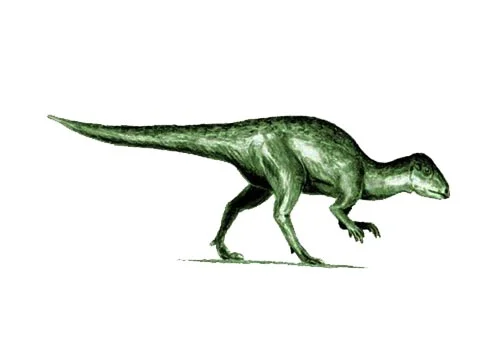Stenopelix (Narrow pelvis)

Sten-oh-pel-ix
Christian Erich Hermann von Meyer – 1857
Herbivore
Estimated 1.5 meters long
Ceratopsian
S. valdensis (type)
Germany
Late Jurassic, 154-150 million years ago
Stenopelix Facts
Stenopelix is a genus of small herbivorous dinosaur that lived during the Late Jurassic period, about 154 to 150 million years ago. Its name means “narrow pelvis”, which refers to the unusual shape of its hip bones.
Stenopelix was a relatively small dinosaur, with a length of about 1.5 meters (5 feet) and an estimated weight of around 15 to 20 kilograms (33 to 44 pounds). Its body was slender and light, with long hindlimbs and a relatively short tail. Stenopelix had a small head with sharp teeth that were adapted for cropping and slicing vegetation.
One of the most distinctive features of Stenopelix was its narrow pelvis. The hip bones were elongated and pointed, which gave the animal a very slim appearance. This unique pelvis may have been an adaptation for fast running and agility, as it allowed the legs to be positioned closer together.
Stenopelix is known from only a few fossils found in Europe, and its exact relationships with other dinosaurs are still uncertain. Some researchers have suggested that it may be a close relative of the more famous ornithopod dinosaurs, while others have suggested that it may be an early member of a group called the heterodontosaurids, which are known for their diverse and unusual teeth.
Despite its relatively obscure status in the world of dinosaurs, Stenopelix is an important part of the fossil record and has helped shed light on the diversity of small herbivorous dinosaurs that lived during the Late Jurassic period.



